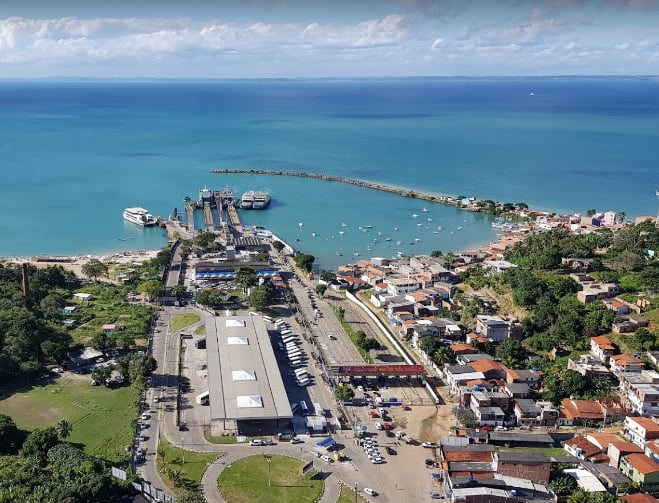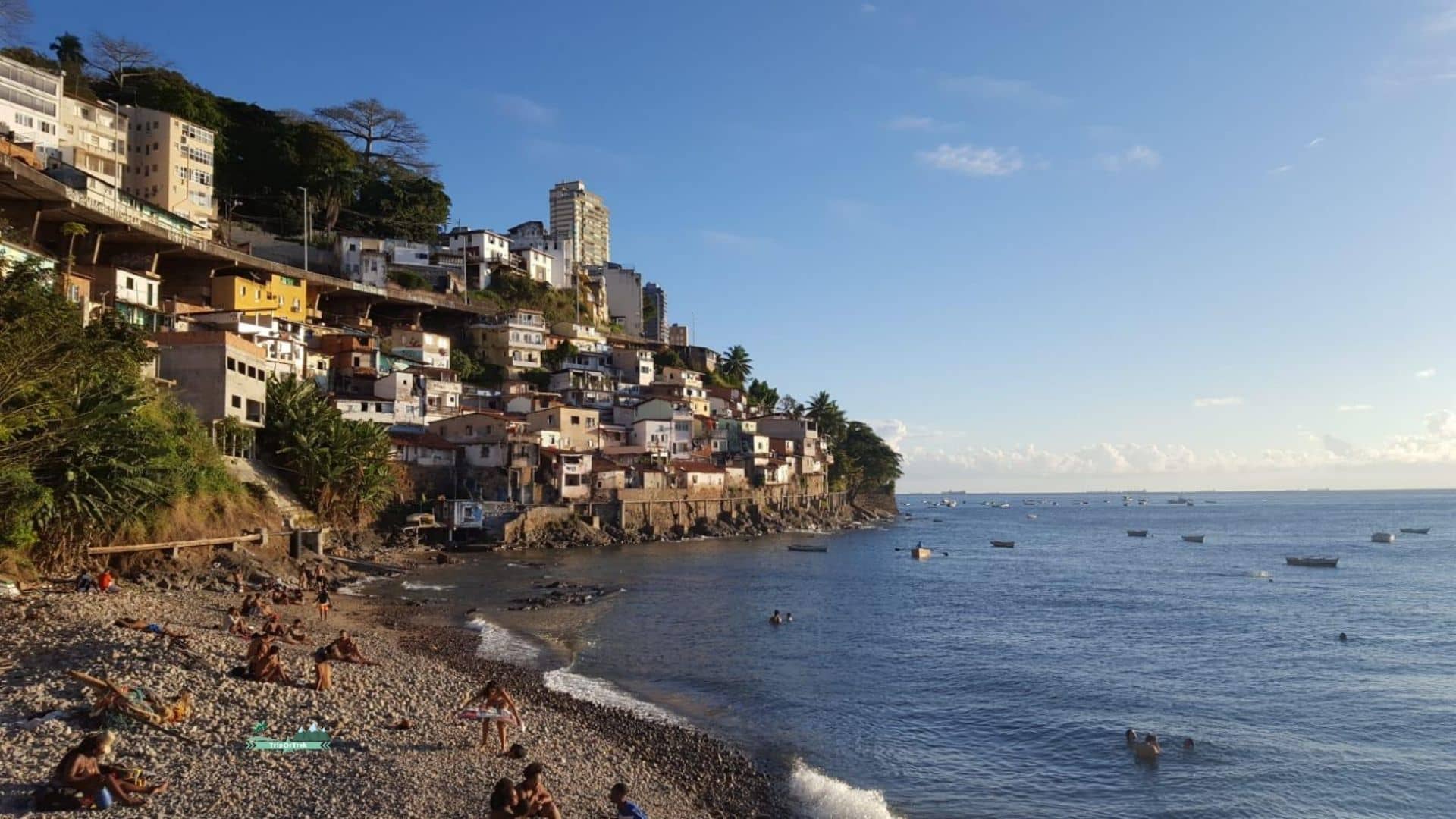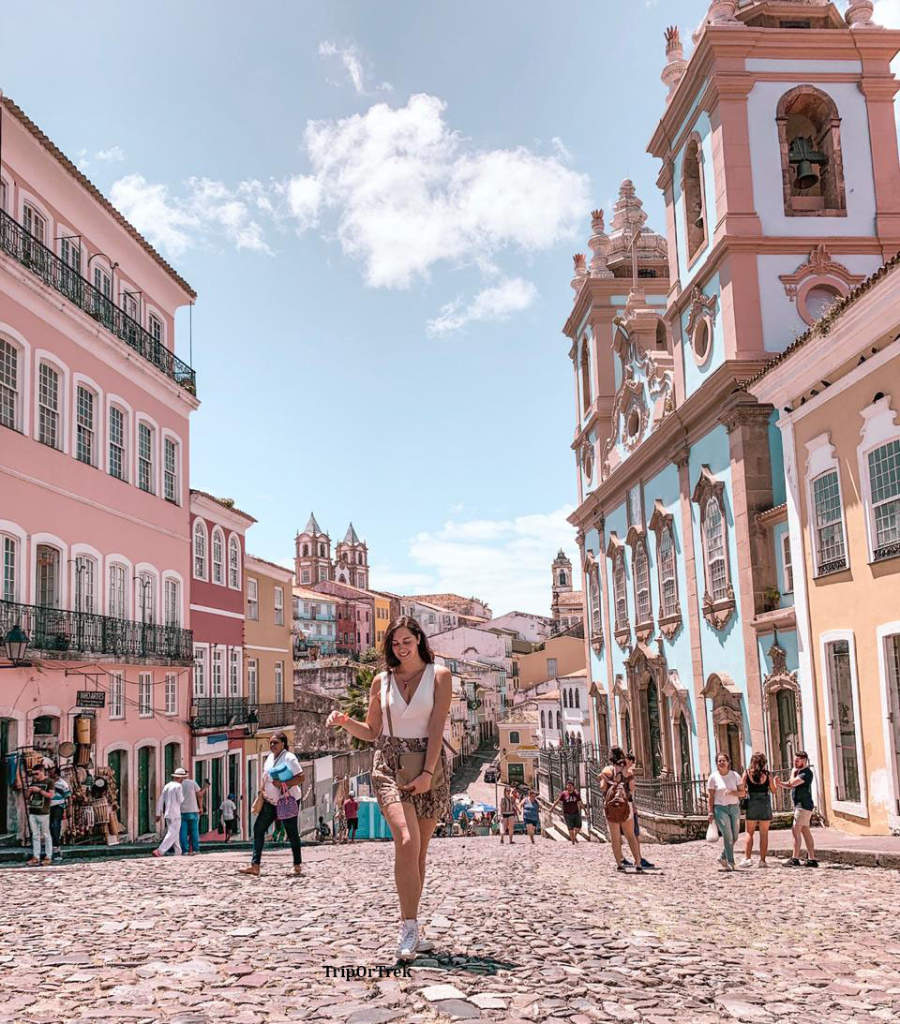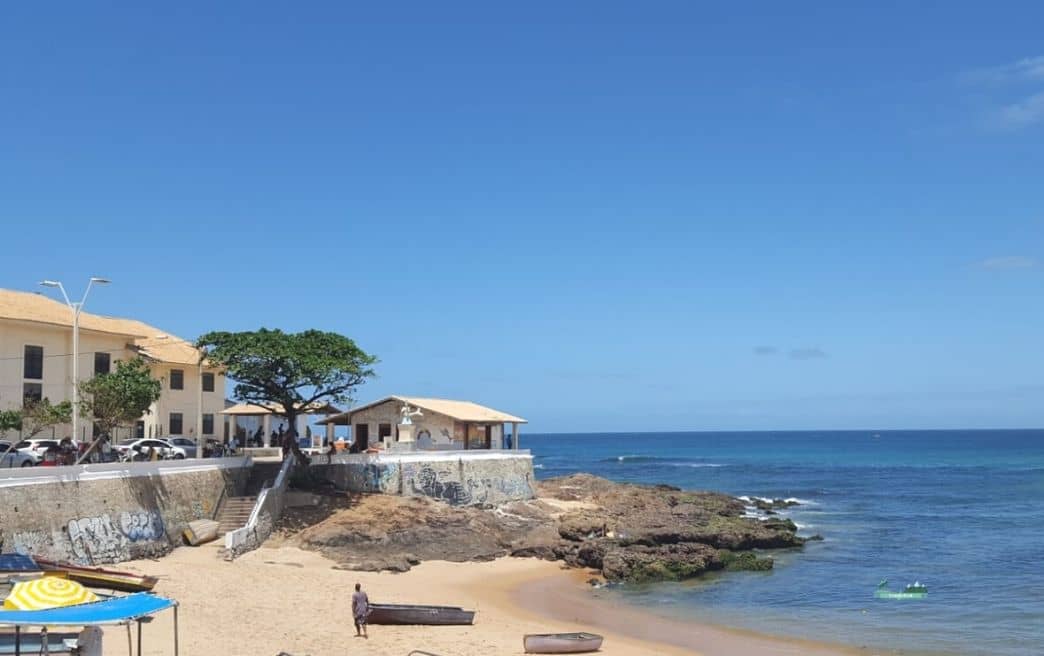
Itinerary to discover the religious traditions of the city of Salvador de Bahia: from the Casa de Iemanja to the church of Nosso Senhor Do Bonfim.
Living Salvador de Bahia means learning about its lively, kind people, united in a mixture of ethnicities, religions and folklore that can be admired everywhere. Salvador, in fact, is known for being the capital of religious syncretism born from the fusion of cults and currents of thought of Africans, Christians and Indians. It is therefore inevitable to move from the rigor of the Jesuit churches of Pelourinho to the temples dedicated to the orishas, divinities who personify the forces of nature. During the colonial period, in fact, slaves were prohibited from professing their religion and practicing their rituals. To get around this censure, which was severely punished, Africans began to worship their gods, however, referring to Catholic saints. In this way they circumvented the prohibitions by continuing to worship their divinities.
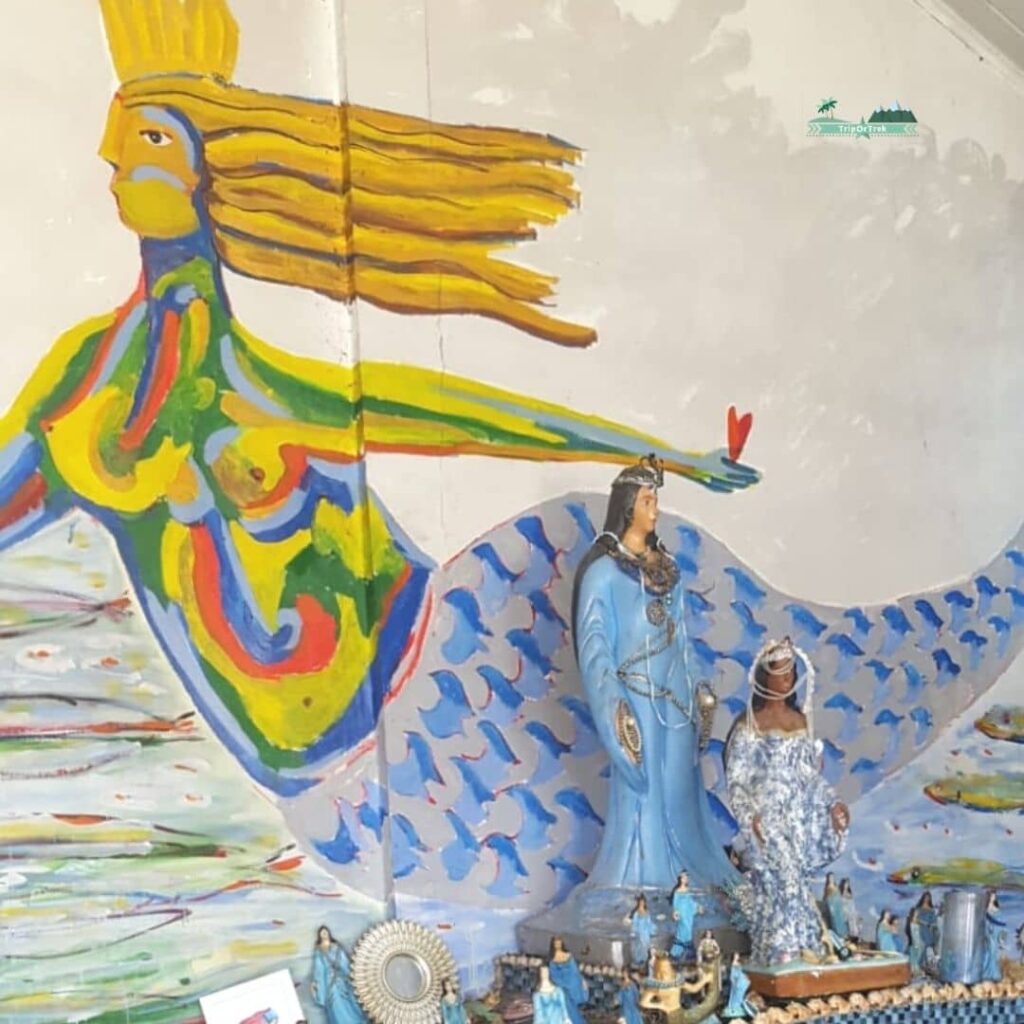
The goddess of the sea
Strolling along the promenade of Rio Vermelho, a residential neighborhood famous in the last century as a meeting place for intellectuals and today the center of Salvador de Bahia’s nightlife, I discovered the Casa de Iemanja, the goddess of the sea. The cult of Iemanjá is linked to the Yoruba, slaves deported to Bahia from West Africa at the time of colonization and her name is syncretized as the creator of water and the origin of life.
Iemanja is considered the mother of all gods and men, like Our Lady, but the meaning of her name is “mother whose children are fish” for this reason she is the protector of the fishermen who also manage the temple on the sea, the “Casa do peso”, located next to the church of Sant’Anna.
The temple is small, enveloped by the scent of flowers that the inhabitants deposit to pay homage to the divinity, its walls are decorated with mosaics inspired by the ocean and its creatures, while the votive altar is full of shells and statues of the goddess, depicted with the blue robes of the Madonna and as a siren. Iemanja is so much loved that on February 2nd, in honor of her, great celebrations are held in the Praia da Paciencia to renew the fishermen’s vow to the goddess considered one of the main orishas of Candomblé. This festival began in 1923 when Rio Vermelho fishermen turned to Iemanja for protection and food. Since then, the rite has been renewed every year, involving the whole population between offerings and drum rolls that punctuate the feast.
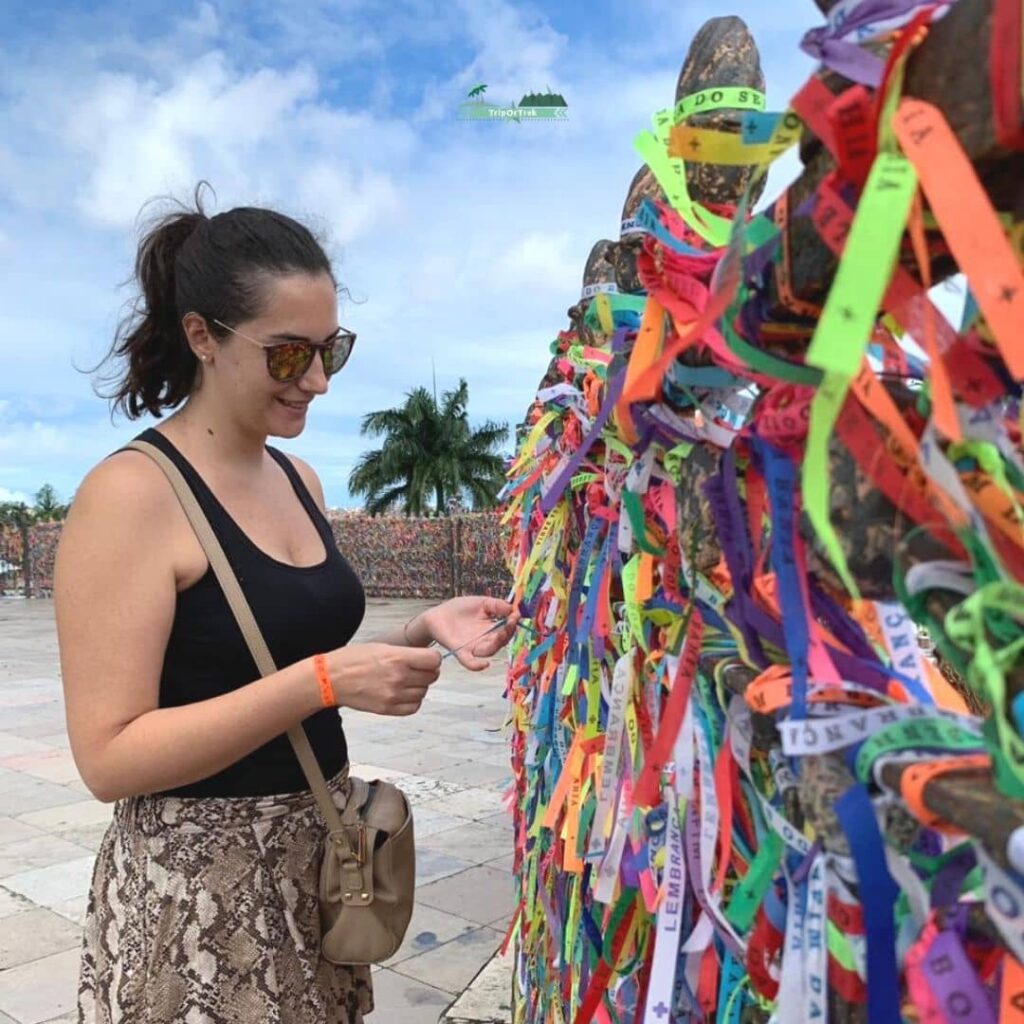
NOSSO SENHOR DO BONFIM
Leaving Rio Vermelho aboard an Uber, in half an hour I reached the Itapagipe hill which houses one of the 365 churches in the city of Salvador. The one dedicated to the cult of Nosso Senhor do Bonfim. Legend has it that the church of Nosso Senhor do Bonfim was built by the Portuguese naval captain Theodózio Rodrigues de Faria who, during a strong storm at sea, promised God that if he were saved he would leave a mark of his devotion on the hills of Salvador.
So it was: since 1772 this place has become a symbol of religious syncretism and Brazilian culture. Nosso Senhor Do Bonfim, in fact, is a democratic and popular saint who transforms himself into a black, Christian or Indian divinity. Numerous miracles have been attributed to him celebrated in a curious ex voto room, located inside the church, on the ceiling of which are hung prostheses of arms, legs, heads, symbols of the numerous requests for grace satisfied by the goodness of Bonfim. It is a strange museum, at times it may seem macabre, but it is the mirror of the culture of Salvador de Bahia.
Seen from the outside, the church of Nosso Senhor do Bonfim dominates the city with its austere air, but the colors of thousands of bracelets, symbols of worship, knotted around its gates make it less severe.
Tradition has it that before leaving the sacred place, Bahians and tourists alike buy colored bracelets, the “fitas do Bonfim”, to tie on the wrist and at the entrance to the church by making three knots and expressing as many wishes to invoke the help of the saint. Legend has it that at least one of these will come true. I made three knots and expressed my wishes, now I am waiting for the Bonfim to keep his promise.
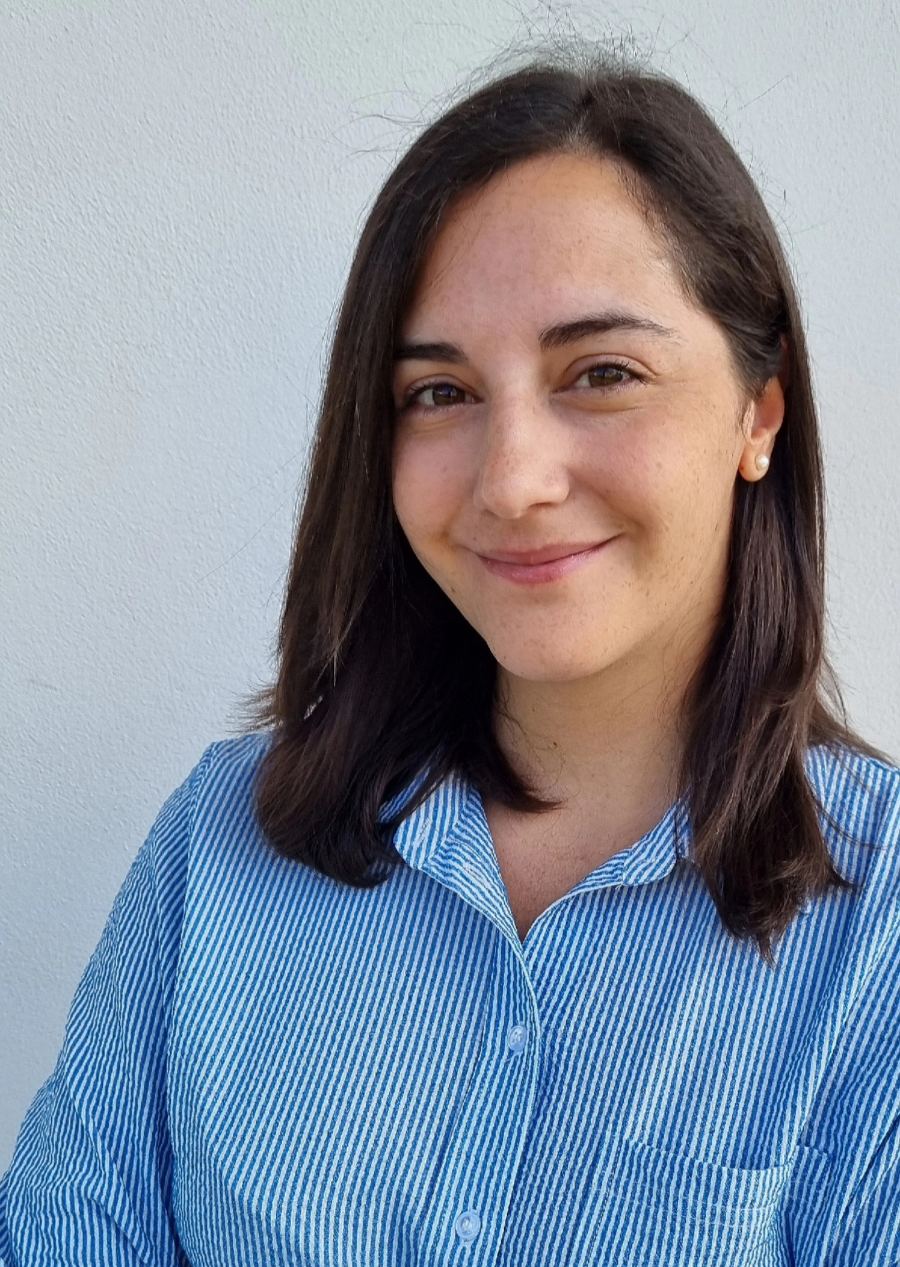
Viaggio e racconto il tuo territorio scrivendo di turismo, marketing territoriale e storytelling nel mio blog TripOrTrek



